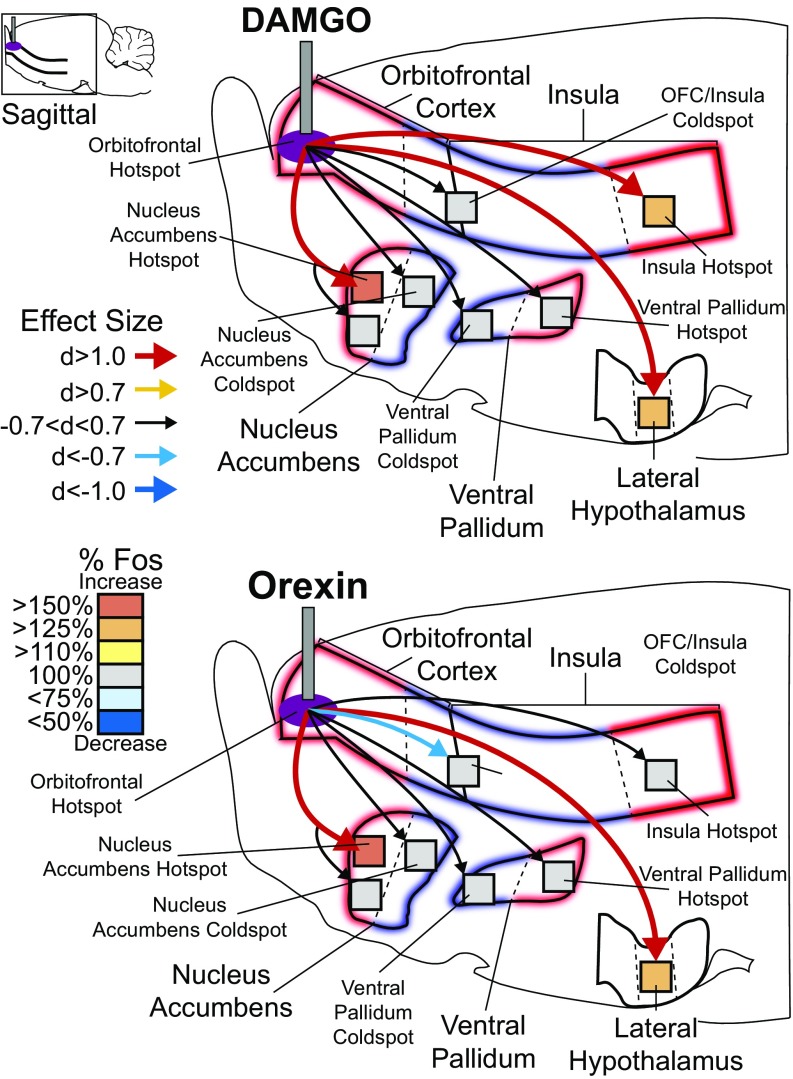Fig. 4.
OFC hotspot stimulation recruits larger brain circuitry for hedonic enhancement. (Upper) DAMGO microinjections in the OFC hotspot increased Fos by >130% in the insula hotspot (d = 3.34) relative to vehicle microinjections (vehicle = 100%). No change was detected in the cortical coldspot (d = −0.477). Subcortically, DAMGO microinjection in the OFC hotspot increased Fos in the rostrodorsal NAc medial shell hotspot by >250% (d = 4.02) but did not alter Fos in the rostroventral NAc (d = −0.160) or in the NAc caudal coldspot (d = 0.041). DAMGO microinjection in the OFC hotspot did not change Fos in the VP caudal hotspot (d = 0.00) or VP rostral coldspot (d = −0.199) but did increase Fos by 125% in the mid perifornical lateral hypothalamus (d = 2.37). Orexin microinjections in the OFC hotspot mildly reduced Fos in the caudal OFC and insula coldspot by 15% below baseline (d = −0.741) and mildly increased Fos by 113% in the far-caudal insula hotspot (d = 0.612) relative to vehicle injections. Like DAMGO, orexin microinjection in OFC hotspot also increased Fos in the NAc rostrodorsal shell hotspot by 180% (d = 1.26) but did not alter Fos in the rostroventral NAc (d = −0.131) or the caudal shell coldspot (d = −0.325). Orexin microinjection in OFC hotspot did not change Fos in the VP caudal hotspot (d = 0.528) or rostral coldspot (d = −0.288) but did increase Fos in the lateral hypothalamus by 128% (d = 1.66).

